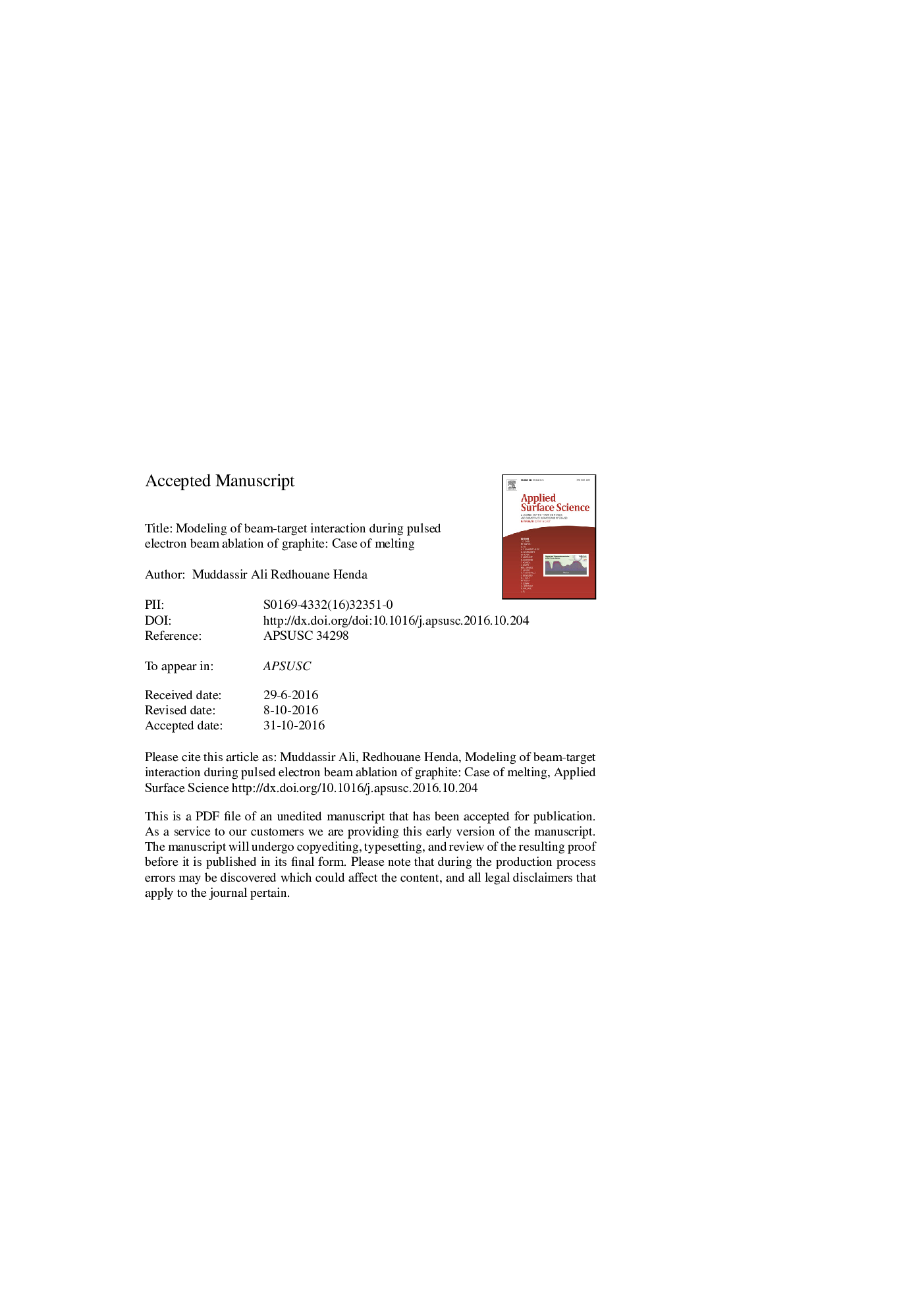| Article ID | Journal | Published Year | Pages | File Type |
|---|---|---|---|---|
| 5352680 | Applied Surface Science | 2017 | 51 Pages |
Abstract
A one-dimensional thermal model based on a two-stage heat conduction equation is employed to investigate the ablation of graphite target during nanosecond pulsed electron beam ablation. This comprehensive model accounts for the complex physical phenomena comprised of target heating, melting and vaporization upon irradiation with a polyenergetic electron beam. Melting and vaporization effects induced during ablation are taken into account by introducing moving phase boundaries. Phase transition induced during ablation is considered through the temperature dependent thermodynamic properties of graphite. The effect of electron beam efficiency, power density, and accelerating voltage on ablation is analyzed. For an electron beam operating at an accelerating voltage of 15 kV and efficiency of 0.6, the model findings show that the target surface temperature can reach up to 7500 K at the end of the pulse. The surface begins to melt within 25 ns from the pulse start. For the same process conditions, the estimated ablation depth and ablated mass per unit area are about 0.60 μm and 1.05 μg/mm2, respectively. Model results indicate that ablation takes place primarily in the regime of normal vaporization from the surface. The results obtained at an accelerating voltage of 15 kV and efficiency factor of 0.6 are satisfactorily in good accordance with available experimental data in the literature.
Related Topics
Physical Sciences and Engineering
Chemistry
Physical and Theoretical Chemistry
Authors
Muddassir Ali, Redhouane Henda,
